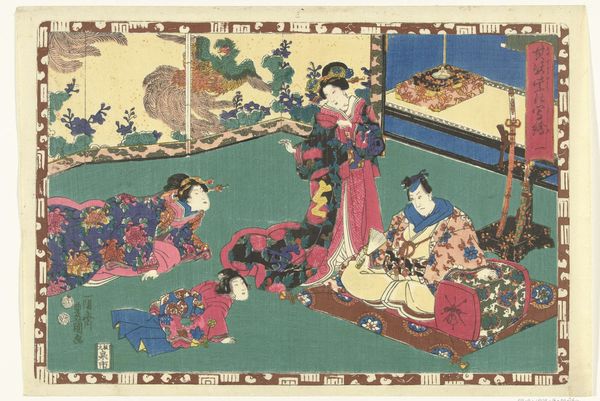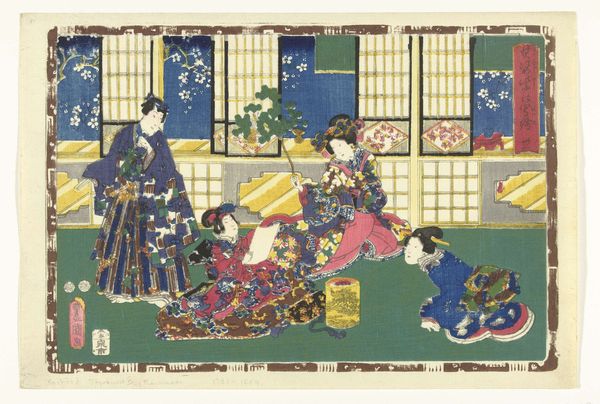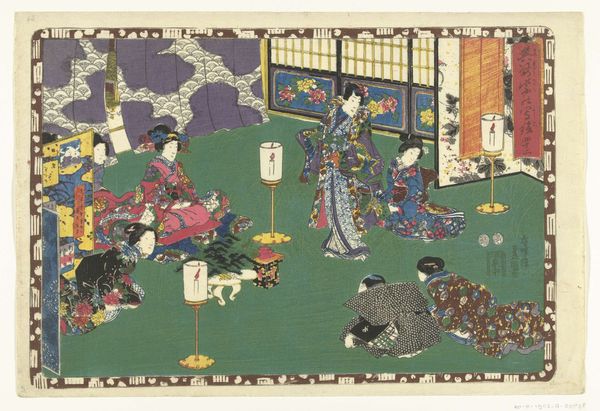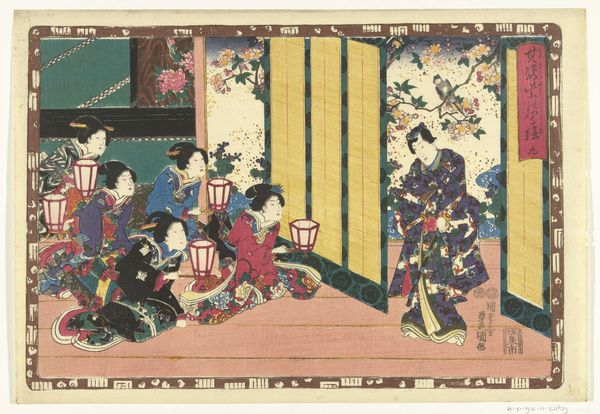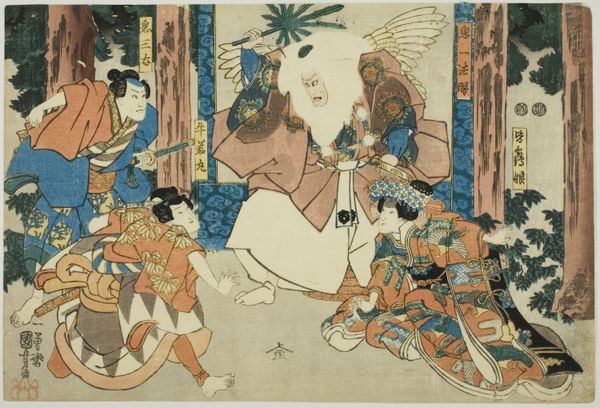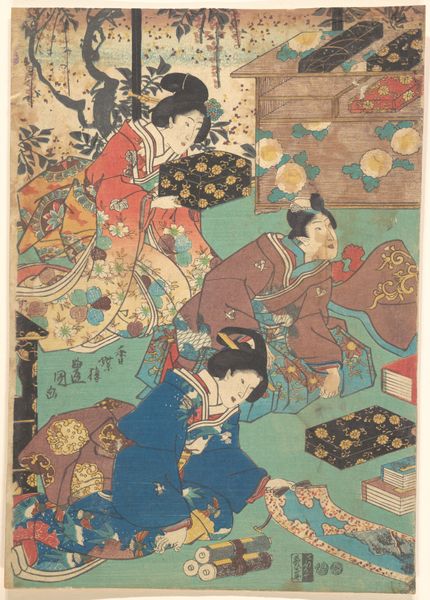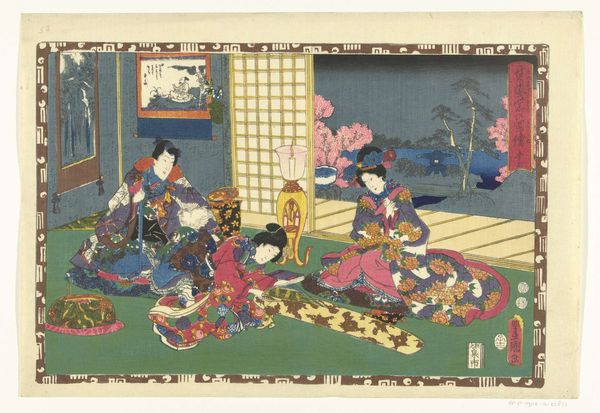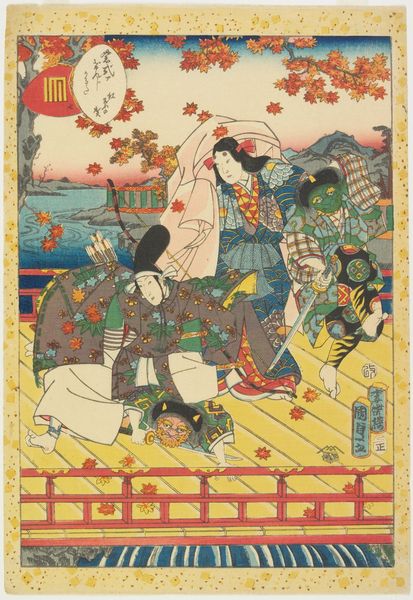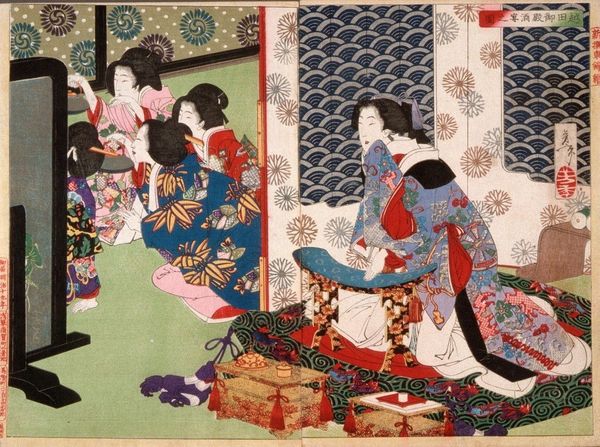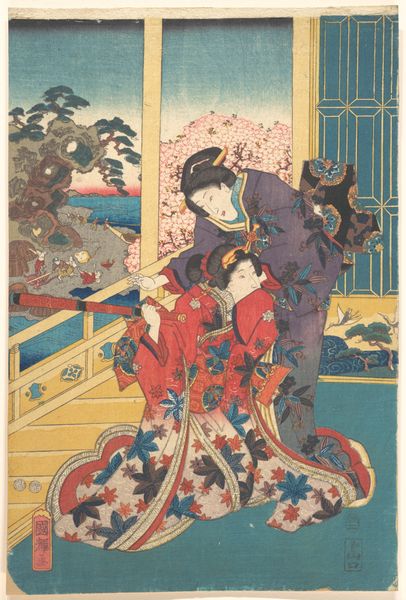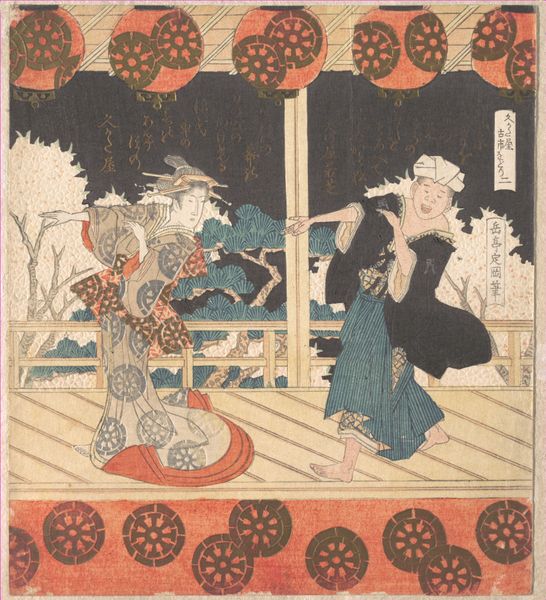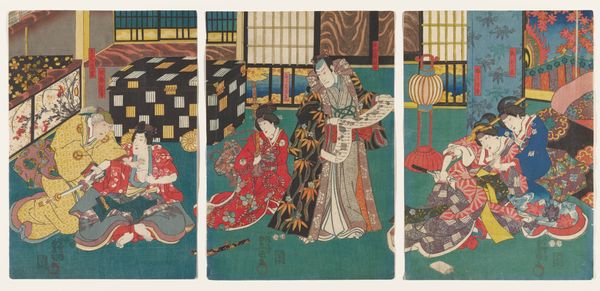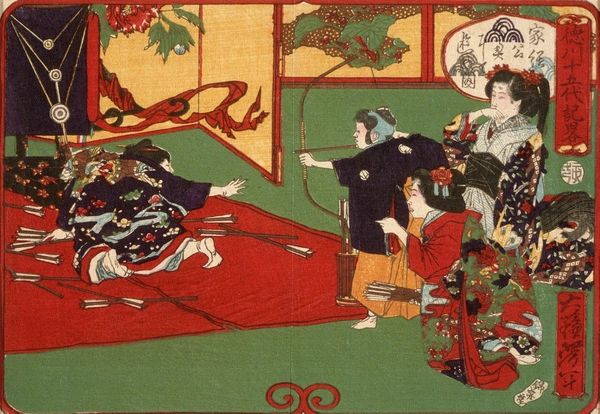
painting, print, intaglio, paper, watercolor, woodblock-print
#
portrait
#
painting
# print
#
intaglio
#
asian-art
#
ukiyo-e
#
figuration
#
paper
#
watercolor
#
woodblock-print
#
art nouveau
#
watercolour illustration
#
genre-painting
#
decorative-art
#
decorative art
Dimensions: height 259 mm, width 384 mm
Copyright: Rijks Museum: Open Domain
Editor: So, here we have "Chapter 17," a vibrant woodblock print from around 1849-1850 by Utagawa Kunisada, housed at the Rijksmuseum. There is this wonderful domestic scene, very colourful, and the patterning is intense. I'm really curious – what strikes you most about it? Curator: It’s a fascinating image to consider from a materialist perspective. Look at the labor embedded within the piece itself: from the cultivation of the mulberry bark for the paper, the mixing of pigments for the ink, the carving of the woodblocks and the hand-printing of each color layer, this wasn't just art, but an industry employing craftspeople, facilitating both material production and consumption. Editor: Wow, I hadn't thought about all that went into making it. I just saw the pretty colors and the detailed kimonos. Curator: The kimonos are very important. What are they made of, by whom, for whom, and what meanings do those material choices convey about status, trade, and cultural values? Even the composition reflects this materiality. It suggests staged production: the layering of elements – background, figures, objects – not just to represent a space, but to emphasize the artificiality and constructed nature of social scenes, hinting towards performance as labour. What do you make of the patterns everywhere? Editor: Now that you mention it, the way they cram every surface with pattern... it feels almost excessive. Was that a popular style then, or did it carry some meaning beyond mere decoration? Curator: Precisely! It speaks to the commodification of aesthetics; that visual richness may equate to social prestige or perceived value, so maybe not just pure esthetics, but signifiers of capital accumulation. Editor: That's fascinating. It makes me think differently about the scene depicted, now viewing it less as just a window into the past and more about the cultural values attached to things that people surround themselves with. Thanks, I am definitely seeing this through fresh eyes. Curator: And I through yours. The intersection of art and the lived experience of production is the real subject.
Comments
No comments
Be the first to comment and join the conversation on the ultimate creative platform.
